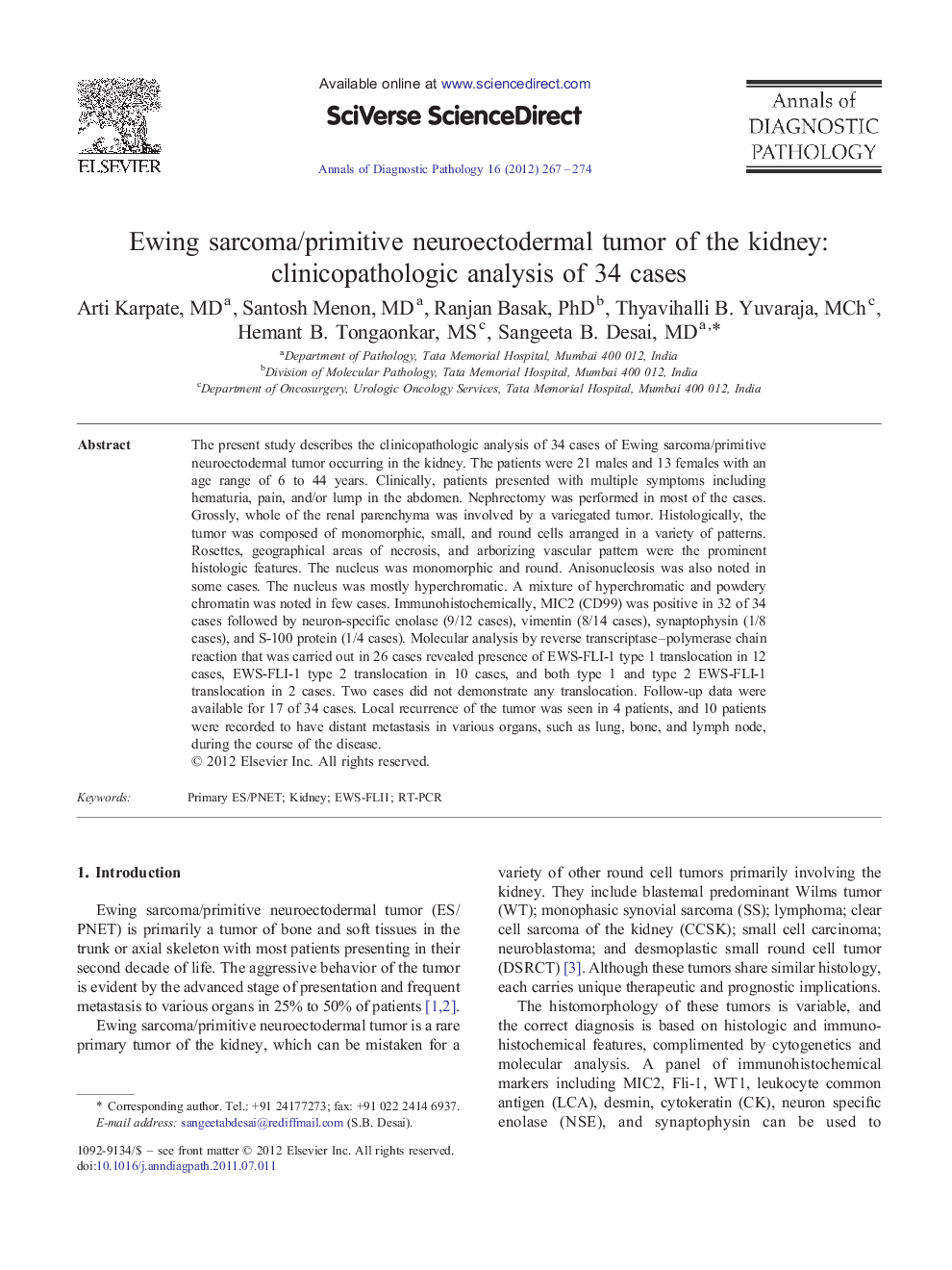| Article ID | Journal | Published Year | Pages | File Type |
|---|---|---|---|---|
| 4130000 | Annals of Diagnostic Pathology | 2012 | 8 Pages |
The present study describes the clinicopathologic analysis of 34 cases of Ewing sarcoma/primitive neuroectodermal tumor occurring in the kidney. The patients were 21 males and 13 females with an age range of 6 to 44 years. Clinically, patients presented with multiple symptoms including hematuria, pain, and/or lump in the abdomen. Nephrectomy was performed in most of the cases. Grossly, whole of the renal parenchyma was involved by a variegated tumor. Histologically, the tumor was composed of monomorphic, small, and round cells arranged in a variety of patterns. Rosettes, geographical areas of necrosis, and arborizing vascular pattern were the prominent histologic features. The nucleus was monomorphic and round. Anisonucleosis was also noted in some cases. The nucleus was mostly hyperchromatic. A mixture of hyperchromatic and powdery chromatin was noted in few cases. Immunohistochemically, MIC2 (CD99) was positive in 32 of 34 cases followed by neuron-specific enolase (9/12 cases), vimentin (8/14 cases), synaptophysin (1/8 cases), and S-100 protein (1/4 cases). Molecular analysis by reverse transcriptase–polymerase chain reaction that was carried out in 26 cases revealed presence of EWS-FLI-1 type 1 translocation in 12 cases, EWS-FLI-1 type 2 translocation in 10 cases, and both type 1 and type 2 EWS-FLI-1 translocation in 2 cases. Two cases did not demonstrate any translocation. Follow-up data were available for 17 of 34 cases. Local recurrence of the tumor was seen in 4 patients, and 10 patients were recorded to have distant metastasis in various organs, such as lung, bone, and lymph node, during the course of the disease.
